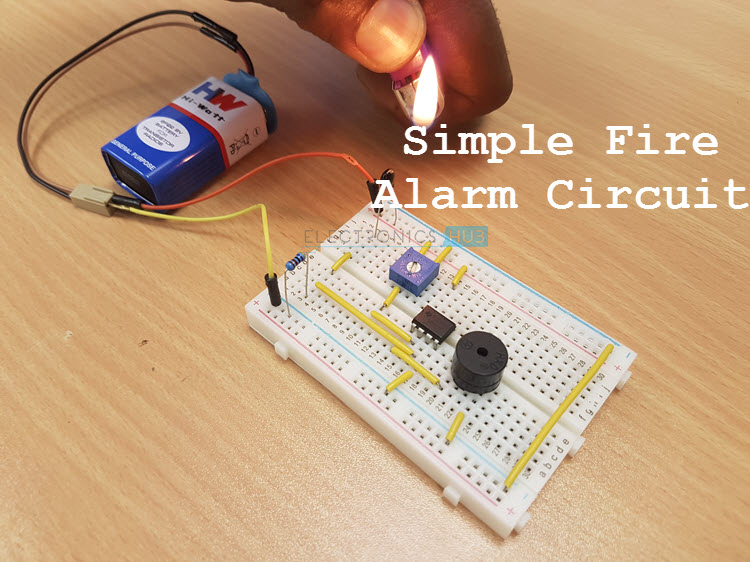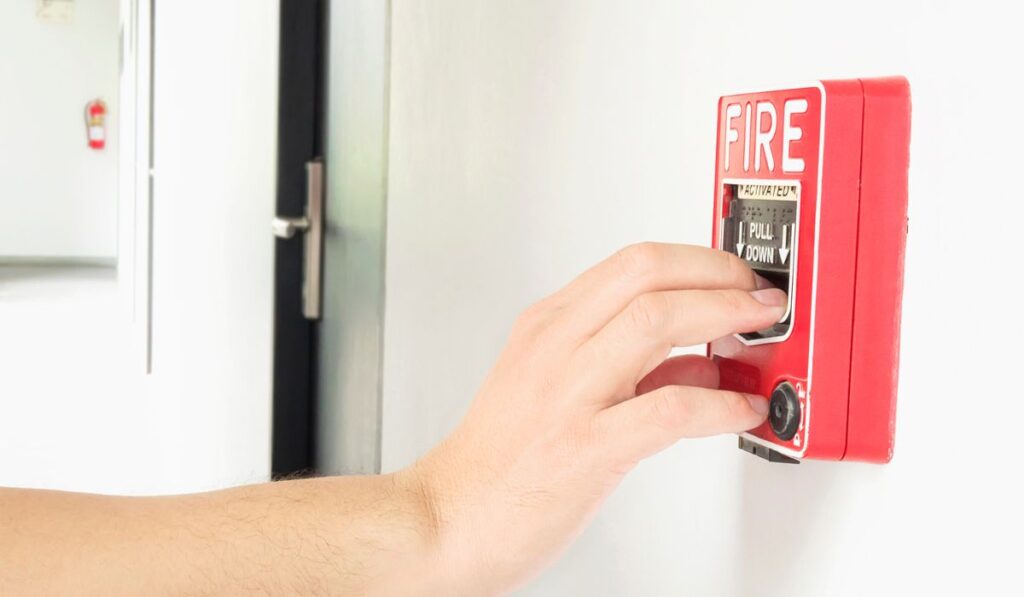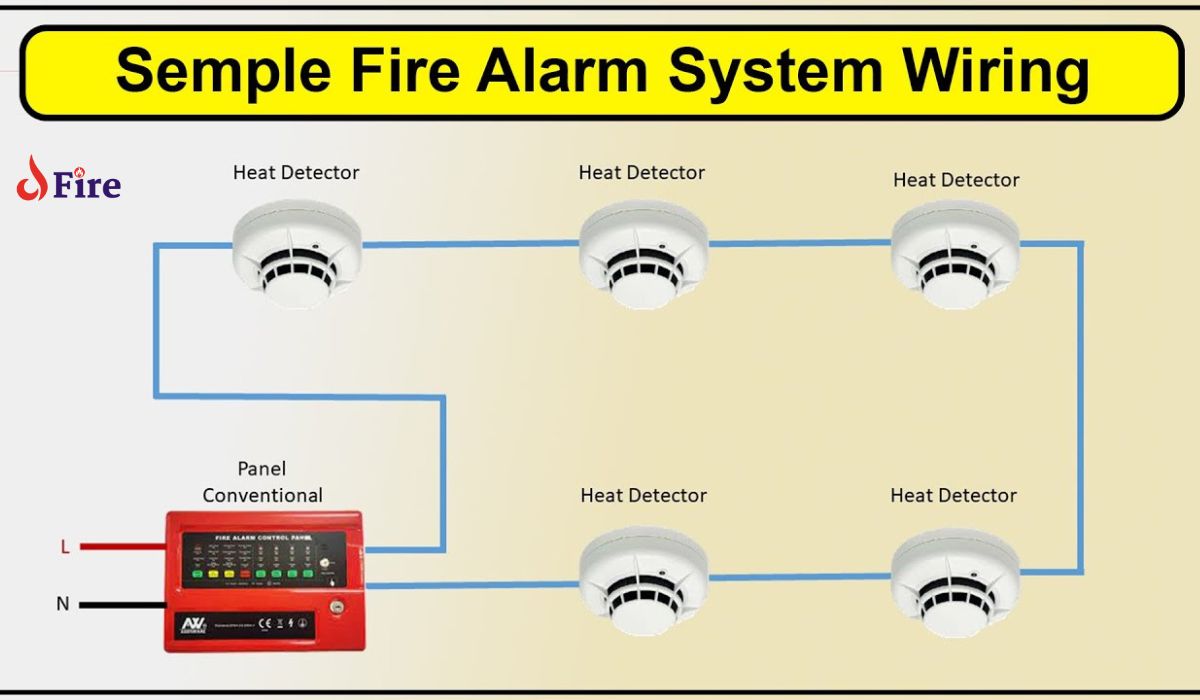The simplest fire alarm system is the conventional fire alarm system. It operates on a basic electrical circuitry design.
Understanding fire safety and prevention is vital for home owners and businesses alike. A conventional fire alarm system provides a straightforward solution. Its uncomplicated design and easy installation make it ideal for small structures. This system divides the building into zones, with detectors and call points wired to a central control panel.
In the event of a fire, the area where the alarm is triggered is pinpointed, allowing for a quick and efficient response. Simple to maintain and cost-effective, conventional fire alarm systems are a popular choice for those seeking basic but reliable fire detection. This no-frills option remains a staple in fire safety strategies, especially in locations where complex systems are not necessary or may not be cost-effective.
Introduction To Fire Safety And Alarm Systems
Fire safety is crucial for protection. A reliable fire alarm system can save lives and property. In this blog post, we explore the simplest of all fire alarm systems. Simple systems are often the most user-friendly, which is vital for quick detection and response during emergencies.
The Importance Of User-friendly Alarms
User-friendly fire alarms are essential for safety. They ensure that everyone, regardless of their technical know-how, can respond correctly and swiftly. Simple alerts and instructions can prevent panic, enabling effective evacuation.
- Quick Recognition – Users can identify alarms fast.
- Clear Instructions – Easy-to-follow steps for people to act immediately.
- Accessibility – Systems should be understandable for all individuals.
Evaluating Ease Of Use In Alarm Systems
When evaluating fire alarm systems, the ease of use should be a top priority. Simple systems often feature:
| Feature | Benefit |
|---|---|
| Intuitive Design | Minimizes confusion. |
| One-Step Activation | Facilitates quick action. |
| Clear Audio/Visual Alerts | Alerts are noticeable and understood. |
Simple fire alarm systems are often the key to a successful swift response in an emergency. Ensuring everyone can operate the system is as crucial as the technology itself.

Credit: www.electronicshub.org
Types Of Fire Alarm Systems
Keeping safe means knowing your options. Fire alarm systems come in various forms. Each serves a unique purpose. The key lies in understanding which system fits the needs of your space the most. Explore the simplest to the most advanced types.
Conventional Fire Alarm Systems
Imagine a system that is both reliable and easy to understand. Conventional fire alarm systems are perfect for small to medium spaces. They divide the area into zones. Each zone has detectors and call points. When fire strikes, the zone lights up on the control panel.
- Pros: Cost-effective, simple to install, easy to operate.
- Cons: Limited information, not ideal for large complexes.
Addressable Fire Alarm Systems
Addressable fire alarm systems bring precision. Unlike conventional ones, they provide exact locations for fire alerts. It’s like having a system that talks, detailing each event. This suits large buildings or campuses where details matter.
| Benefits | Drawbacks |
|---|---|
| Pinpoints fire location | Higher cost |
| Great for complex structures | More complex installation |
Hybrid Fire Alarm Systems
What if you could merge two systems into one? Hybrid fire alarm systems do just that. They blend components from both conventional and addressable systems. It’s a flexible solution. It’s perfect for those who want to upgrade gradually without overhauling the entire system.
Key points:
– A hybrid solution for gradual upgrades
– Interoperable with different system types
Wireless Fire Alarm Systems
Imagine no wires, no drilling, and quick installation. Wireless fire alarm systems are the pinnacle of convenience. They use secure radio communications. The simplicity lies in their flexibility and minimal impact on the premises. They are especially useful for historic buildings or areas with aesthetic concerns.
- Ease of installation and mobility
- Minimal structural impact
- Quick to adapt to changes in building use
Key Features That Make An Alarm System User-friendly

Choosing the simplest fire alarm system often comes down to finding one that merges ease of use with reliability. A user-friendly alarm system ensures that everyone can operate it effectively, leading to quicker responses in an emergency. Let’s explore the key features that make a fire alarm system stand out in simplicity and accessibility.
Intuitive Design And User Interface
An intuitive design means anyone, regardless of their tech-savviness, can understand how the system works. Simple controls and straightforward instructions contribute to this ease of use. A user-friendly interface includes large, clear buttons and easily navigable menus for quick actions during emergencies.
Easy Maintenance And Testing
The simplest systems facilitate easy maintenance and testing. Regular maintenance checks and prompt issue resolution are crucial for safety. A well-designed alarm system has features like:
- Self-testing capabilities
- Easy access to batteries
- Simple reset procedures
Clear And Audible Alerts
Clear and audible alerts are essential for an effective fire alarm system. Systems should feature:
- Loud sirens that can be heard over background noise
- Different tones or messages for various types of alerts
- Visual indicators for those with hearing impairments
Seamless Integration With Smart Technology
Modern systems should integrate seamlessly with smart technology. This integration allows for remote monitoring and control, which is key for timely action. Features include:
- Notifications on smartphones
- Compatibility with smart home devices
- Connection to emergency services
Analysis Of Fire Alarm System Manufacturers
When safeguarding lives and property, choosing the right fire alarm system is crucial. With various models and features, pinpointing the simplest system is quite the task. Let’s dive into an analysis of fire alarm system manufacturers to understand which system stands out for its simplicity and reliability.
Leading Brands On The Market
Diverse brands compete for attention in the fire safety industry. Consumers often lean towards reputable names known for quality and ease of use. Brands like Honeywell, Siemens, and Kidde are among the top choices. These manufacturers offer systems acclaimed for their simplicity and effectiveness.
- Honeywell: Renowned for user-friendly interfaces.
- Siemens: Offers scalable solutions for any size building.
- Kidde: Known for easy installation and maintenance.
User Reviews And Testimonials
User feedback is a gold mine of information. Customers frequently highlight ease of use and installation as key factors in their satisfaction. Reviews of Honeywell’s basic models and Kidde’s battery-operated alarms often mention their straightforward functionality.
| Brand | Positive Points | Negative Points |
|---|---|---|
| Honeywell | Intuitive setup, reliable alerts | Higher cost for advanced features |
| Siemens | Customizable, robust design | Complexity in large-scale systems |
| Kidde | Easy to install, budget-friendly | Basic functionality |
Industry Certifications And Standards
Certifications are a testament to a system’s reliability and compliance. Look for marks from organizations like Underwriters Laboratories (UL) or Factory Mutual (FM). These certifications ensure the system you are considering has met rigorous testing and industry standards for safety and effectiveness
Notable certifications across the industry include:
- UL 217: Smoke Alarms.
- UL 268: Smoke Detectors for Fire Alarm Systems.
- ISO 7240: Fire detection and alarm systems.
Systems bearing these seals of approval guarantee simplicity without compromising safety.
Popular User-friendly Fire Alarm Systems
When it comes to safety, a reliable fire alarm system is a must-have in every home and business. Selecting the simplest system to operate ensures quick response times during emergencies. Homeowners and businesses value systems that combine ease of use with robust protection. Let’s explore the top systems that users find friendly and dependable.
Top Picks For Homeowners
Safety at home should be straightforward. Here are the systems that tick all the boxes for simplicity and efficiency:
- First Alert Smoke Detector and Carbon Monoxide Detector Alarm: This combination alarm screams user-friendly with voice alerts and hassle-free maintenance.
- Kidde Battery-Operated Smoke Alarm: Known for its easy installation, this alarm is perfect for those seeking a basic setup without compromising on safety.
- Nest Protect: A smart choice for tech-savvy homeowners, offering self-testing features and phone alerts.
Preferred Systems For Businesses
Businesses require robust fire alarm systems to protect assets and personnel. The following systems are renowned for their reliability and ease of management:
| System | Features |
|---|---|
| Simplex Fire Alarm Systems | Customizable options and integrated fire control make this a powerful choice for complex needs. |
| Honeywell Commercial Fire Alarms | Comprehensive solutions with user-friendly interfaces and quick detection technology. |
| Edwards Fire Alarm Systems | Advanced lifesaving technology coupled with easy-to-use control panels for fast response. |
Systems With The Best User Feedback
Fire alarm systems with glowing reviews often share a common theme: reliability meets user-friendliness. Here’s what users appreciate the most:
- Easy-to-Understand Instructions: Clarity in setup and use is a major win for any fire alarm system.
- Minimal Maintenance: Users love systems that require less upkeep while offering consistent performance.
- Smart Features: Systems that connect to smartphones for alerts and status reports are highly rated.
Feedback points to brands like SimpliSafe, Ring, and Google Nest leading the pack with their intuitive designs and customer-centric features.

The simplest fire alarm system
Installation And Usability Tips
When considering a fire alarm system, simplicity matters. Ease of installation and daily use are key. This section dives into which alarms fit the bill and how to set them up efficiently.
Professional Vs. Diy Installation
Choices vary between professional and DIY installations. Let’s explore both:
- Professional Installation:
- Done by certified technicians.
- Guarantees expert setup.
- Ideal for complex systems.
- DIY Installation:
- Suitable for basic kits.
- Follows simple instructions.
- No technical skills needed.
Accessibility For All Users
Fire alarms must serve everyone. Features like large buttons and clear audio are crucial. Here’s what to look for:
| Feature | Benefit |
|---|---|
| Bright Strobes | Alerts users with impaired hearing. |
| Voice Alarms | Guides visually impaired users. |
| Simple Controls | Makes system easy for all ages. |
Regular Updates And User Support
A reliable fire alarm system needs solid backing. Manufacturers should offer consistent updates and user support. Here’s what top-notch support includes:
- Accessible customer service.
- Easy-to-use online resources.
- Guides for troubleshooting.
Regular software updates ensure your system performs its best. They protect against new threats. User support addresses issues swiftly.
The Role Of Smart Technology In Fire Safety
The simplicity and efficiency of modern fire safety heavily rely on smart technology. This innovation plays a critical role in protecting homes and businesses from fire hazards. Let’s explore the integration of smart technology in fire alarm systems, and the benefits it brings to fire safety.
Smartphone Integration
Control and alerts right at your fingertips. Fire safety has evolved with smartphone integration. This feature allows users to receive instant alerts and monitor their home’s safety, even when away. Below are key advantages:
- Real-time notifications of fire alarms
- Remote access to the fire alarm system
- Ability to silence false alarms quickly
Automated System Monitoring
A vigilant eye over your safety. Automated monitoring ensures your fire alarm system is always at its best. It checks the health of the system and swiftly identifies issues. Below are important features of automated monitoring:
- 24/7 system checks
- Quick detection of system malfunctions
- Instant maintenance alerts
Advanced Features For Enhanced Usability
User-friendly designs for all. Advanced features now incorporate user experience into fire safety. Systems are designed to be easy for anyone to use. Some cutting-edge additions include:
- Voice alerts specifying danger zones
- Touchscreen panels for easy control
- Integration with other smart home devices

Credit: www.amazon.com
Maintaining Your Fire Alarm System
Alarm systems save lives. Keeping your system up to date is crucial. A simple routine check can mean the difference between safety and disaster.
Routine Maintenance Tasks
Safety begins with routine maintenance. Simple steps keep your fire alarm system ready:
- Check batteries every month.
- Clean smoke detectors to avoid false alarms.
- Test all sirens and strobe lights regularly.
- Ensure control panels are free of error messages.
- Review the system’s manual for specific guidelines.
Troubleshooting Common Issues
Systems have problems sometimes. Kick out the common issues fast with these steps:
- Replace dead batteries immediately.
- Clean sensors if the alarm beeps with no fire.
- Reset the system after a false alarm.
- Contact manufacturer support for persistent errors.
Long-term Device Care
The device’s longevity hinges on proper care:
| Task | Frequency |
|---|---|
| Replace detectors | Every 10 years |
| Professional inspection | Annually |
| Update system software | As updates become available |
Frequently Asked Questions Of Which Fire Alarm System Is The Simplest Of All Systems?
What Is The Simplest Type Of Fire Alarm System?
The simplest type of fire alarm system is the conventional fire alarm system. It features basic zone-based coverage and individual detectors wired to a central control panel.
What Is Simple Fire Alarm System?
A simple fire alarm system detects heat or smoke and alerts occupants with an audible alarm, helping ensure early awareness and evacuation during a fire.
What Is The Most Common Type Of Fire Alarm System?
The most common type of fire alarm system is the conventional fire alarm. It divides the building into zones for easy location of fires.
Which Fire Alarm System Is Best?
The best fire alarm system depends on your specific needs. Opt for interconnected smoke detectors for homes or advanced addressable systems for large buildings. Always choose a system that adheres to industry standards and local regulations.
What Is The Simplest Fire Alarm System?
The simplest fire alarm system is a conventional fire alarm system, designed for straightforward installations and operation.
How Do Basic Fire Alarms Function?
Basic fire alarms detect smoke or heat and sound an alarm to alert occupants of potential danger.
Conclusion
Selecting the right fire alarm system needn’t be complex. Stand-alone smoke detectors top the simplicity scale. They’re easy to install and operate, making them ideal for basic fire detection needs. Prioritize safety with a straightforward choice – it could be lifesaving.
Remember, simplicity in fire alarms can still mean robust protection.

I’m Abdus Sobur, a highly skilled and professional Fire Safety Officer with a passion for safeguarding lives and property. Over the course of my career, I’ve conducted numerous successful fire safety audits, earning a reputation for excellence in ensuring public safety.
In addition to my role as a Fire Safety Officer, I’m also dedicated to raising awareness about the importance of fire safety. Through my blog, I share insights into the functions of different fire safety equipment, aiming to empower individuals with the knowledge they need to protect themselves and their communities.
I’m driven by a deep commitment to promoting fire safety awareness and preventing fire-related incidents.

